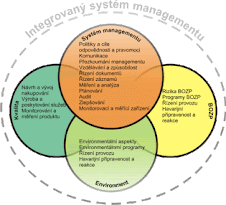Whilst Health and Safety (H&S) issues for companies have been addressed, due to the legal and regulatory requirements of their respective countries, there has never been a published or recognized standard that utilizes existing published standards.
With the advent of OHSAS 18001 to name one such document, simple and straightforward guidance now exists, drawing on the existing clauses and structures of ISO 9000 and ISO 14001.
In providing a framework (OHSAS 18001) the many issues of H&S can be brought together into a manageable documented system.
With the guidance now in place, the resultant systems, whether integrated or not, ensure that the tools for control exist. This provides peace of mind for senior management along with systems and procedures for staff. This can reduce legal costs and working time lost

